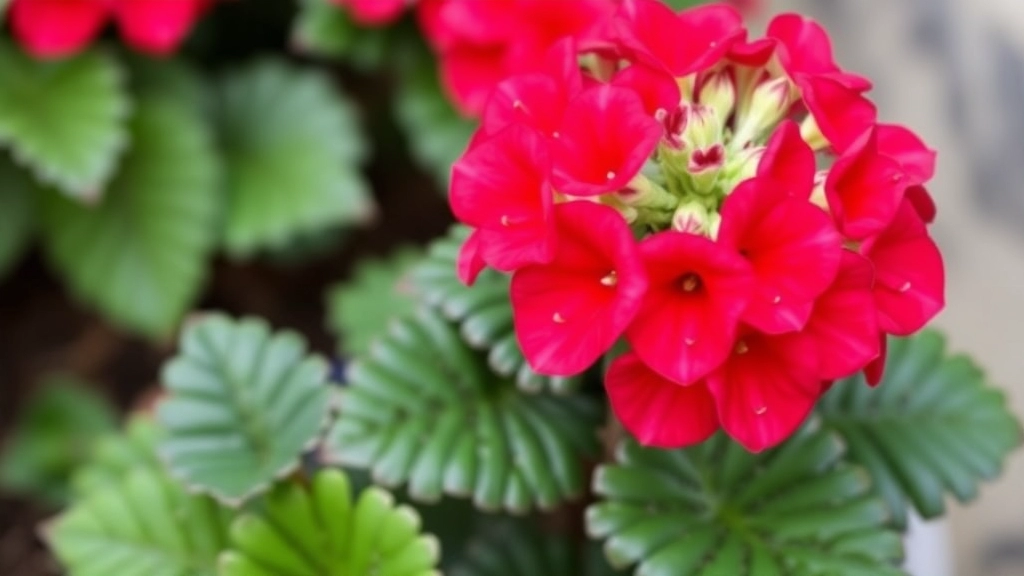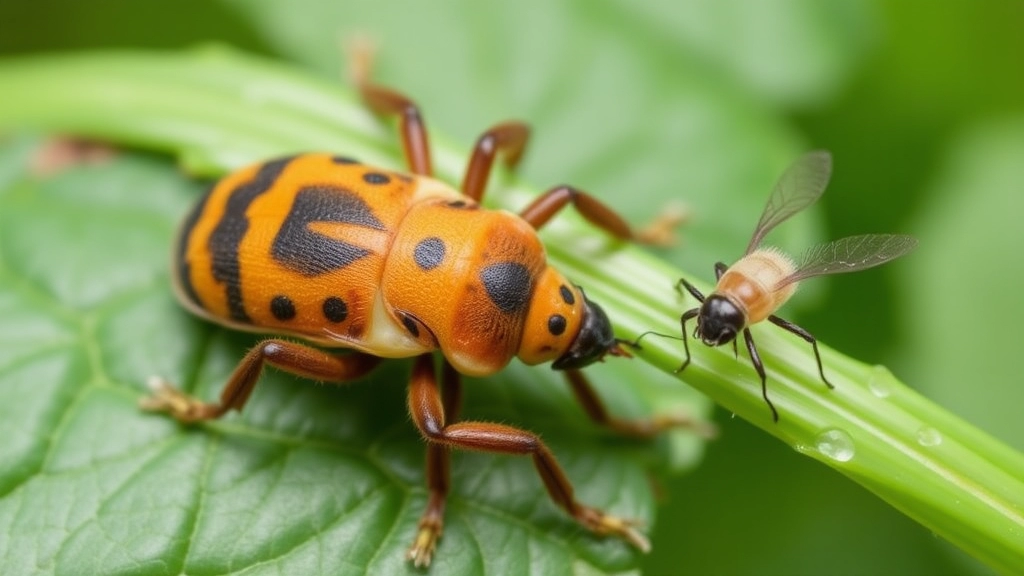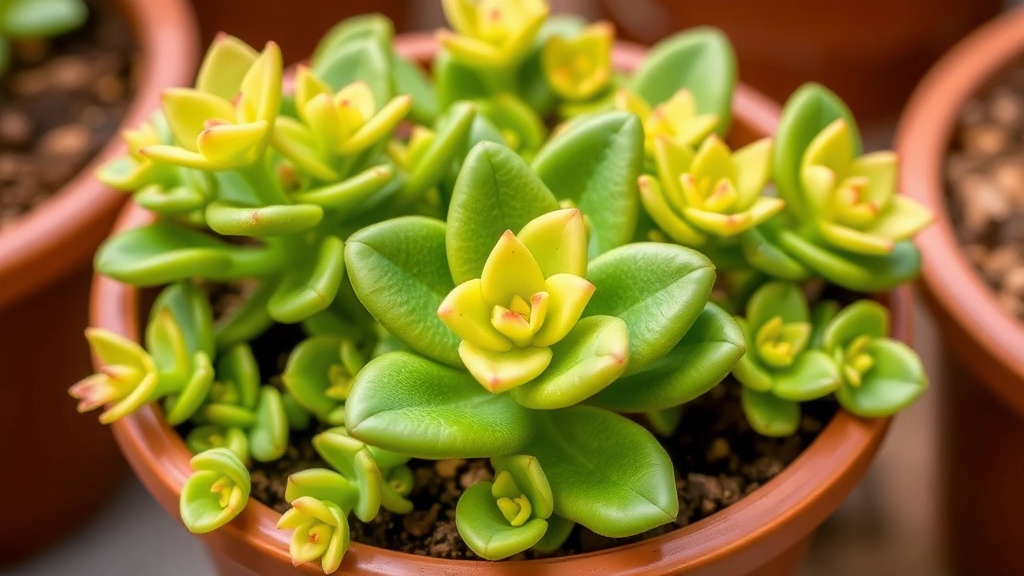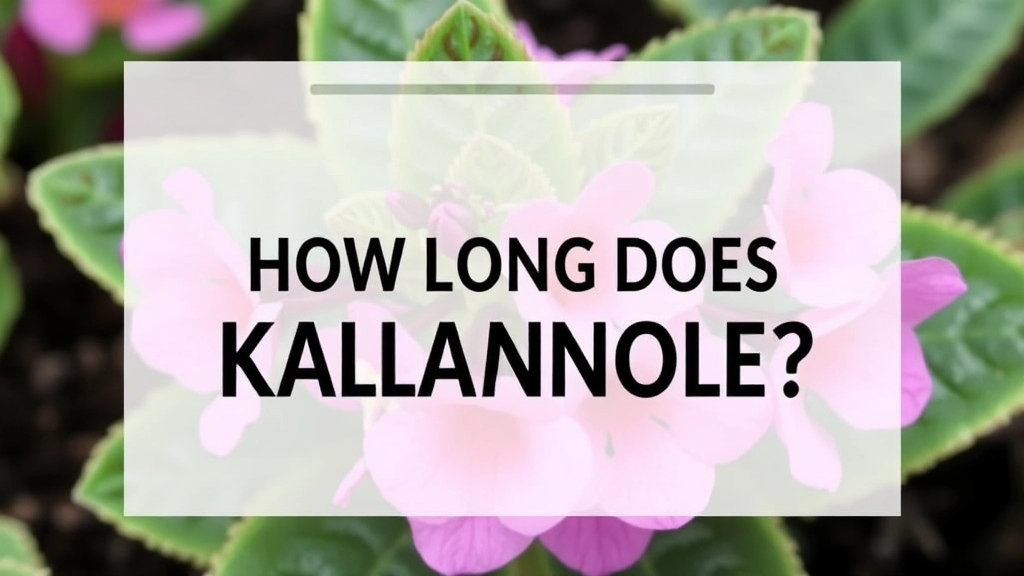Wondering how long does Kalanchoe live?
You’re in the right place. As someone who’s nurtured many of these charming succulents, I can tell you that Kalanchoe plants typically live for several years, especially with proper care. They thrive on minimal water and plenty of sunlight, making them perfect for both seasoned gardeners and beginners.
Lifespan Variability
In my experience, their lifespan can vary depending on the species and growing conditions. While some Kalanchoe varieties can live up to seven years, others might only last a few. The key is to keep an eye on their needs and adjust your care routine accordingly.
Getting Started
So, if you’re ready to dive into the world of Kalanchoe, let’s get started!
Lifespan of Kalanchoe Plants
When considering the lifespan of Kalanchoe plants, many wonder how long these vibrant succulents can thrive in their care.
Kalanchoe plants can live anywhere from three to five years with proper care.
However, their longevity can be influenced by various factors, including environmental conditions and maintenance practices.
Factors Influencing Lifespan
- Light Exposure: Adequate sunlight can significantly enhance their lifespan.
- Watering Practices: Overwatering or underwatering can shorten their life.
- Soil Quality: Well-draining soil is crucial for preventing root rot.
For instance, I once had a Kalanchoe that thrived for nearly six years, primarily because I ensured it received bright, indirect sunlight and was watered only when the soil was dry.
If you’re looking for more detailed tips on how to care for these plants, you might find this Fuzzy Kalanchoe Plant Care Guide helpful. Additionally, understanding the care requirements of Kalanchoe Beharensis Variegata can also provide valuable insights for prolonging the life of your Kalanchoe plants.
Factors Affecting Kalanchoe Longevity

Have you ever wondered why some Kalanchoe plants thrive for years while others seem to fizzle out?
Well, several factors play a crucial role in determining how long your Kalanchoe will stick around.
Light Exposure
- Bright Indirect Light: Kalanchoes love it bright but not too harsh. Direct sunlight can scorch their leaves.
- Too Little Light: If they’re in a dim corner, they might stretch out and become leggy, which isn’t a good look.
Watering Practices
- Overwatering: This is a biggie. Kalanchoes are succulents and prefer their soil to dry out between waterings.
- Underwatering: On the flip side, don’t let them go too dry. Droopy leaves are a cry for help.
Soil Quality
- Well-Draining Soil: A mix designed for succulents is perfect. It helps prevent root rot.
- Nutrient-Rich: While they don’t need much, a little boost during the growing season can help them flourish.
Temperature and Humidity
- Ideal Temperature: They thrive in temperatures between 15°C and 25°C. Too cold, and they’ll sulk.
- Humidity Levels: Being desert natives, they prefer low humidity. High humidity can lead to fungal issues.
Fertilization
- Occasional Feeding: Using a diluted liquid fertilizer during the growing season can do wonders.
- Avoid Over-Fertilizing: Too much can lead to weak growth and even damage.
Pest Management
- Regular Checks: Keeping an eye out for pests like mealybugs and aphids can save your plant from stress.
- Prompt Action: If you spot any, act quickly to prevent infestations.
Optimal Growing Conditions
Creating the right environment for your Kalanchoe plants is essential for their longevity and health.
What Conditions Do Kalanchoe Plants Need?
Kalanchoe thrives in specific conditions that mimic its native habitat. Here are the key factors to consider:
- Light: Kalanchoe loves bright, indirect sunlight. Aim for around 6 hours of light daily. Too much direct sun can scorch the leaves.
- Temperature: Ideal temperatures range from 18°C to 24°C. Protect them from frost and extreme cold, as they are sensitive to low temperatures. For more details, check out the optimal Kalanchoe temperature guide.
- Humidity: Kalanchoe prefers moderate humidity. If your home is too dry, consider using a humidifier or placing a tray of water nearby.
- Soil: A well-draining potting mix is crucial. Look for a cactus or succulent mix to prevent root rot.
- Watering: Allow the soil to dry out between waterings. Overwatering is a common mistake that can lead to health issues. Learn more about Kalanchoe watering best practices.
Potting and Container Considerations
Choosing the right pot can make a difference. Opt for pots with drainage holes to prevent water accumulation. Terracotta pots are excellent as they allow for air circulation.
Fertility Needs
During the growing season (spring and summer), feed your Kalanchoe with a balanced, water-soluble fertiliser every month. This will support healthy growth and vibrant blooms.
Common Diseases and Pests

As we delve into the care of Kalanchoe plants, it’s essential to consider the potential threats that can hinder their growth.
Kalanchoes, while generally hardy, are susceptible to a few common diseases and pests that can impact their longevity. Recognising these issues early can save your plants and ensure they thrive.
Common Diseases
- Leaf Spot:
- Typically caused by fungal infections.
- Symptoms include dark spots on leaves.
- Prevention: Ensure good air circulation and avoid overhead watering.
- Root Rot:
- Often results from overwatering or poor drainage.
- Affected plants may show yellowing leaves and wilting.
- Prevention: Use well-draining soil and pots with drainage holes.
- Powdery Mildew:
- A fungal disease that appears as white powdery spots.
- Can stunt growth and affect overall health.
- Prevention: Maintain proper humidity levels and avoid overcrowding.
Common Pests
- Mealybugs:
- Small, white, cotton-like pests that suck sap from the plant.
- Can lead to yellowing leaves and stunted growth.
- Control: Wipe leaves with a cotton swab dipped in alcohol.
- Spider Mites:
- Tiny pests that cause stippling on leaves.
- They thrive in dry conditions.
- Control: Increase humidity and regularly mist your plants.
- Aphids:
- Small, green or black insects that cluster on new growth.
- They can distort leaves and cause wilting.
- Control: Spray with a strong jet of water or use insecticidal soap.
Pruning and Maintenance Tips
When it comes to ensuring the longevity of your Kalanchoe plants, proper pruning and maintenance play a vital role. Many plant enthusiasts often wonder how to keep their Kalanchoe healthy and vibrant throughout the seasons.
Why Pruning is Important:
Pruning not only promotes bushier growth but also helps in removing dead or diseased leaves, which can prevent potential issues down the line. Here are some essential tips for effective pruning:
- Timing: The best time to prune Kalanchoe is just after it has finished flowering. This encourages new growth and prepares the plant for the next blooming cycle.
- Tools: Use clean, sharp scissors or pruning shears. This minimizes the risk of introducing diseases.
- Technique:
- Remove any dead or yellowing leaves.
- Trim back leggy stems to encourage denser growth.
- If your plant has flowered, cut back the spent blooms to the base of the stem.
Maintenance Tips:
In addition to pruning, regular maintenance will help your Kalanchoe thrive:
Propagation Methods for Kalanchoe Plants

So, you’ve got a thriving Kalanchoe, and you’re thinking, “How can I get more of these beauties?” You’re in the right place! Propagation is a fun and rewarding way to expand your collection or share with friends.
Leaf Cuttings
One of the simplest ways to propagate Kalanchoe is through leaf cuttings. Here’s how to do it:
- Choose a Healthy Leaf: Pick a mature leaf from your plant.
- Let it Callous: Place the leaf on a dry surface for a day or two to allow the cut end to callous over. This helps prevent rot.
- Planting: Once it’s calloused, place it in well-draining soil, burying the cut end slightly.
- Water Sparingly: Give it a light misting, but don’t overwater.
Stem Cuttings
If you prefer a quicker route, stem cuttings are also effective:
- Select a Stem: Choose a healthy stem with a few leaves.
- Cut and Callous: Cut it just below a node and let it callous for a day.
- Planting: Insert the cut end into soil, ensuring it’s stable.
- Watering: Again, keep the soil lightly moist but not soggy.
Offsets
Kalanchoe plants often produce offsets (baby plants) that can be separated:
- Identify Offsets: Look for small plants at the base of your Kalanchoe.
- Gently Remove: Carefully twist or cut them away from the main plant.
- Replant: Place them in their own pots with well-draining soil.
Tips for Successful Propagation
- Light: Keep your new cuttings in bright, indirect light.
- Humidity: A humid environment can help, so consider covering them with a plastic bag (just don’t forget to vent it!).
- Patience: It might take a few weeks for roots to develop, so hang tight!
Seasonal Care Instructions for Kalanchoe Plants
As we delve into the seasonal care of Kalanchoe plants, it’s essential to understand how different seasons impact their growth and health. These vibrant succulents thrive with the right seasonal adjustments, ensuring longevity and a stunning display of blooms.
Spring Care
Spring marks the beginning of the growing season for Kalanchoe.
- Light: Ensure they receive bright, indirect sunlight.
- Watering: Increase watering frequency, allowing the soil to dry out between waterings.
- Fertilisation: Use a balanced fertiliser every four to six weeks to support new growth.
Summer Care
During the summer months, Kalanchoe plants need special attention to prevent stress.
- Temperature: Keep them in a cooler spot if temperatures soar above 30°C.
- Watering: Water thoroughly but less frequently, as they may require less moisture.
- Pest Check: Regularly inspect for pests, as warmer weather can attract unwanted visitors.
Autumn Care
As temperatures begin to drop, Kalanchoe plants will start preparing for dormancy.
- Light: Gradually reduce the amount of direct sunlight.
- Watering: Cut back on watering; they need less moisture as growth slows down.
- Pruning: Trim any dead or wilted leaves to encourage healthy growth.
Winter Care
Winter can be challenging for Kalanchoe, but with the right approach, they can thrive.
- Light: Provide them with as much light as possible; consider using grow lights if necessary.
- Watering: Water sparingly. Ensure the soil is completely dry before the next watering.
- Temperature: Keep them in a warm area, ideally between 15°C and 20°C.
For more detailed information on how to care for your Kalanchoe plants during different seasons, check out our comprehensive care guide. Additionally, if you’re interested in specific varieties, our Flaming Katy care guide offers in-depth tips for this popular Kalanchoe species.
FAQs About Kalanchoe Longevity
How long does a Kalanchoe plant typically live?
While the lifespan of a Kalanchoe plant can vary, with proper care, they can live for several years. Factors such as light exposure, watering practices, soil quality, temperature, humidity, fertilization, and pest management all play a significant role in their longevity.
What kind of light is best for Kalanchoe plants?
Kalanchoes thrive in bright, indirect light. Direct sunlight can scorch their leaves, while too little light can cause them to become leggy.
How often should I water my Kalanchoe?
It’s essential to let the soil dry out between waterings. Overwatering can lead to root rot, while underwatering can cause droopy leaves. Aim to keep the soil moderately moist, but not soggy.
What type of soil is ideal for Kalanchoe plants?
Kalanchoes prefer well-draining soil, such as a mix designed for succulents. This helps prevent root rot and ensures the plant has the right environment to thrive.
What are the ideal temperature and humidity levels for Kalanchoe?
Kalanchoes thrive in temperatures between 15°C and 25°C and prefer low humidity levels. High humidity can lead to fungal issues.
How often should I fertilize my Kalanchoe?
Occasional feeding with a diluted liquid fertilizer during the growing season can benefit your Kalanchoe. However, avoid over-fertilizing, as this can lead to weak growth and potential damage.
What are common pests that affect Kalanchoe plants?
Kalanchoes can be affected by pests such as mealybugs, spider mites, and aphids. Regular checks and prompt action can help prevent infestations.
What diseases are Kalanchoe plants susceptible to?
Common diseases include leaf spot, root rot, and powdery mildew. Ensuring good air circulation, proper watering practices, and maintaining appropriate humidity levels can help prevent these issues.
How can I propagate my Kalanchoe plant?
Kalanchoe plants can be propagated through leaf cuttings, stem cuttings, and offsets. Each method involves specific steps to ensure successful propagation, such as allowing cut ends to callous and using well-draining soil.
What should I do if I notice pests on my Kalanchoe?
If you spot pests like mealybugs or aphids, act quickly. For mealybugs, wipe the leaves with a cotton swab dipped in alcohol. For spider mites, increase humidity and mist the plants regularly. For aphids, spray with a strong jet of water or use insecticidal soap.
References
-
How to Grow and Care for Kalanchoe
-
Kalanchoe Plant Care
-
Kalanchoe: How to Grow and Care for Kalanchoe Plants
